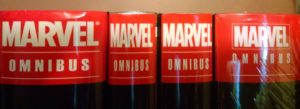 We’ve reached the halfway point of the 2016 Secret Ballot for Marvel’s Most-Wanted Omnibus by Tigereyes. I covered #35-31 in the last installment.
We’ve reached the halfway point of the 2016 Secret Ballot for Marvel’s Most-Wanted Omnibus by Tigereyes. I covered #35-31 in the last installment.
Here’s your early warning: this batch of books includes not one but three X-Men titles, and boy do I have opinions about those! Also, all five of these books placed lower in previous years.
I’ve failed to say this previously, but if you have any extra intelligence to add about the probable runs or opinions about the comics therein, please leave a comment! Even when ti comes to X-Men, I don’t know (or remember!) everything about these books – and you might.
Want to learn more about the Marvel Omnibus editions that already exist and the issues they cover? My Marvel Omnibus & Oversized Hardcover Guide is the most comprehensive tool on the web for tracking Marvel’s hugest releases – it features every book, plus release dates, contents, and even breakdowns of $/page and what movies the books were released to support.
Now that you’ve been adequately warned, let’s x-amine what I have to say about #30 through 26!
#30. X-Factor (2006) by Peter David, Vol. 1
Last Year’s Rank: #45
Probable Contents: Madrox – Multiple Choice #1-6 & X-Factor #1-24
Possible Contents: X-Factor #28-45, X-Factor: The Quick and the Dead, X-Factor Special: Layla Miller One-Shot, and She-Hulk #31.
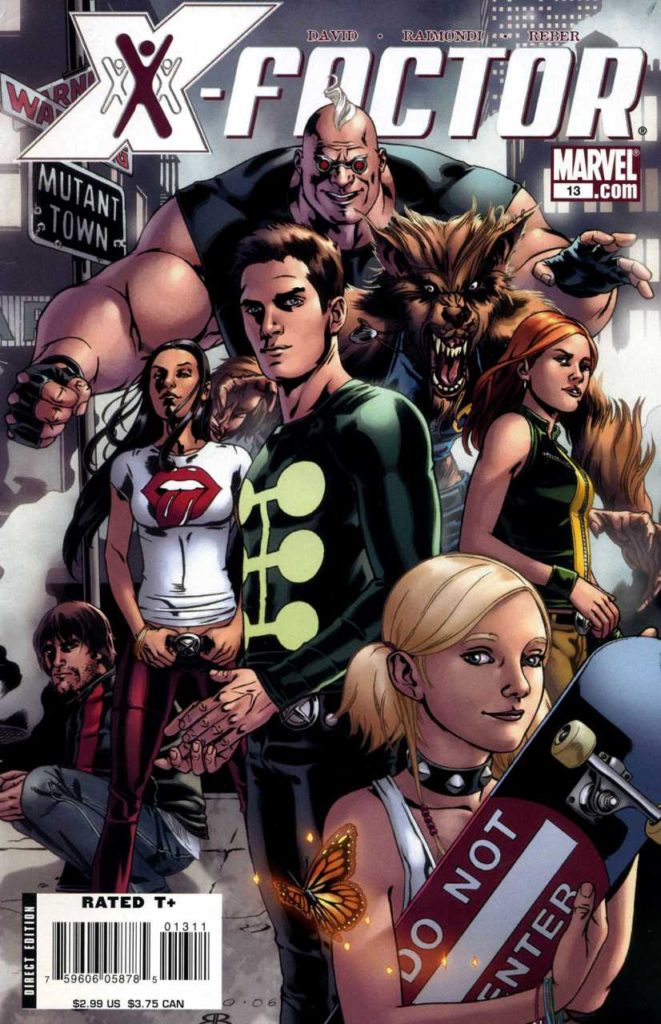 What is it? Multiple Man is making ends meet as a detective, but his agency turns into an unlikely (and unorganized) mutant team despite itself in the wake of House of M.
What is it? Multiple Man is making ends meet as a detective, but his agency turns into an unlikely (and unorganized) mutant team despite itself in the wake of House of M.
The Details:
There are some comics that are good or inventive, and then there are some comics that are so ludicrously out-of-left-field perfection you cannot believe you’re reading them.
That final description applies to Peter David’s 2006 X-Factor reinvention, which was an incredible comic throughout a 100+ issue run aside from a a bit of lag in it’s final year. Recent Marvel or DC series taking an “indie approach” to their stories have won much acclaim, but X-Factor beat them all to the punch. It was always a book about broken people and the relationships they form, yet it never stopped also being about mutants and super-villains.
The mix of mutants in question are a surprise. There isn’t a single star in the line-up. At the core are a trio are holdovers from David’s original X-Factor run – Jamie Madrox, Strong Guy, and Wolfsbane. Joining the fray are a pair of Wolfsbane’s New Mutants compatriots, Siryn and Richtor. Filling out the cast is Monet from Generation X (written spectacularly!) and the peculiar House of M star Layla Miller with her catchphrase “I know stuff.” Oh, plus an occasional drop-in by Quicksilver.
The detective work the team carries out is interesting, but the longer plot threads of Layla Miller’s knowing stuff and Madrox’s emerging love triangle are what really drive this run. The early arcs in #1-24 have a decidedly noir feel through a parade of pencillers thanks to a unified and somewhat subdued color palette. David’s past experience with X-Men crossovers really pays off, as Messiah CompleX at points feels like a story all about Jamie and Layla which has many unexpected twists. While the shadowy, noir look wears off after a three issue break for X-Men crossover Messiah CompleX, the story of the team takes off afterwards in some of the most acclaimed issues of the series and with the unlikely addition of Longshot, Shatterstar, and Darwin.
This omnibus could be a slightly lackluster choice if Marvel stuck with the brief run of #1-24. Fans have already been left unsatisfied by a pair of Complete Collections that covered that range. If instead they pushed the run into the 40s, it would pay off some of David’s substantial threads, even if we would still need two volumes that might never materialize to cover the remaining issues #200-262.
Chances we see this in 2017? ![]() As mentioned, the Complete Collections of this series stalled after two installments and none of the characters are particularly popular at the moment. If Monet really broke out in Uncanny X-Men or Madrox came back in a new series I could see this happening in a second.
As mentioned, the Complete Collections of this series stalled after two installments and none of the characters are particularly popular at the moment. If Monet really broke out in Uncanny X-Men or Madrox came back in a new series I could see this happening in a second.
Want to read it right now? As a modern Marvel run, these issues have been covered entirely by standard hardcover and trade releases, all outlined in the X-Factor Guide.
![]()
#29. Adam Warlock by Friedich and Starlin
Last Year’s Rank: #37
Probable contents: Mirroring his Essentials with Marvel Premiere (1972) #1-2, Warlock (1972) #1-15, The Avengers (1963) Annual 07, The Incredible Hulk (1968) #176-178, Marvel Team-Up (1972) #55, Marvel Two-In-One (1974) Annual 2, Strange Tales (1951) #178-181.
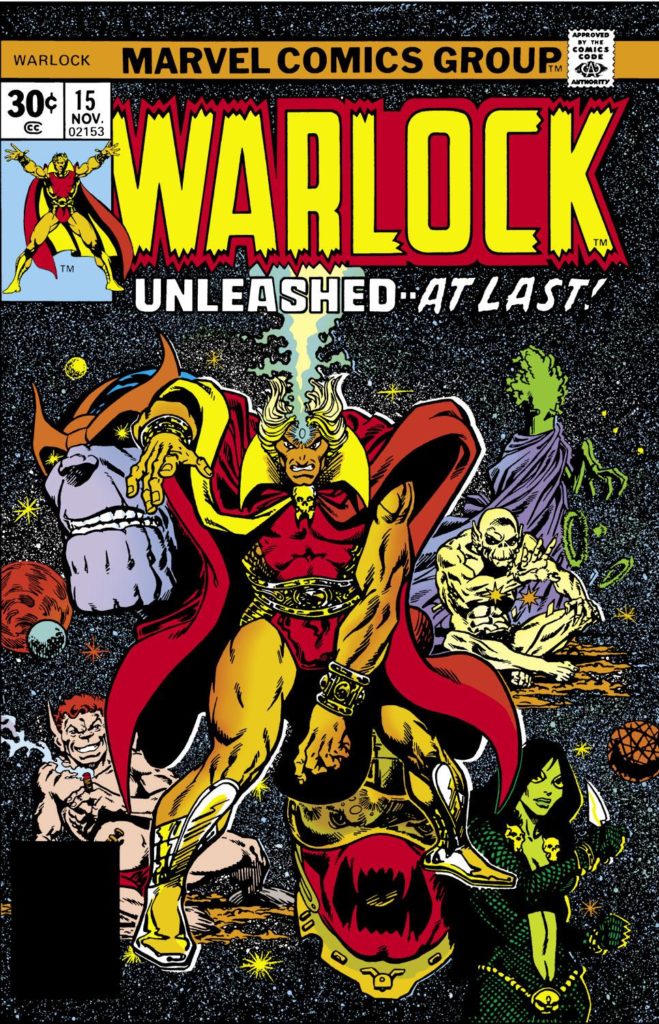 Possible contents: To distinguish this from prior Marvel Masterwork volumes (of which there are only two), it could add Marvel Two-in-One #61-63, though they don’t star Warlock directly – just reference him.
Possible contents: To distinguish this from prior Marvel Masterwork volumes (of which there are only two), it could add Marvel Two-in-One #61-63, though they don’t star Warlock directly – just reference him.
What is it? Jim Starlin’s psychedelic space Messiah has humbler beginnings in this material that’s a far cry from the beloved Infinity trilogy of the 90s.
The Details:
I always knew Warlock was a revered Marvel classic, but it wasn’t until I read Roy Thomas’s forward to the first volume of Warlock’s Marvel Masterwork’s did I realize how much a product of the times Warlock truly was.
He goes from cosmic drifter to messianic figure fighting a metaphorical Anti-Christ under the pen of Mike Friedrich (and under the influence of Jesus Christ Superstar) to later transform into a mentally unstable cosmic warrior under Jim Starlin in the brief span of 19 issues.
The result is that an all-in-one edition of Warlock doesn’t play as a single, unified epic. Plus, without the context of the zeitgeist of the day, this material won’t hold the resonance for modern audiences the same way a more timeless Spider-Man or Fantastic Four comic from the same period would. However, that doesn’t stop it from being a prohibitive classic for open-minded modern readers.
Chances we see this in 2017? ![]() It wouldn’t be a shocker to see anything by Jim Starlin reproduced in Omnibus, but Warlock is an oddly niche hunk of material due to the character’s negligible profile in the past two decades of comics. While Marvel has been actively winging out collections for Infinity-related properties, this predates them. Plus, the Starlin material already hit a handy paperback.
It wouldn’t be a shocker to see anything by Jim Starlin reproduced in Omnibus, but Warlock is an oddly niche hunk of material due to the character’s negligible profile in the past two decades of comics. While Marvel has been actively winging out collections for Infinity-related properties, this predates them. Plus, the Starlin material already hit a handy paperback.
Want to read it right now? Warlock is covered in the Guardians of the Galaxy guide, but I can make it simple for you – either pick up Essential Warlock or the pair of Masterworks Volume 1 (silly cheap!) and Volume 2 (has reached silly prices – the Starlin material in paperback is a suitable replacement, just missing some supporting issues).
![]()
#28. Doctor Strange by Roger Stern
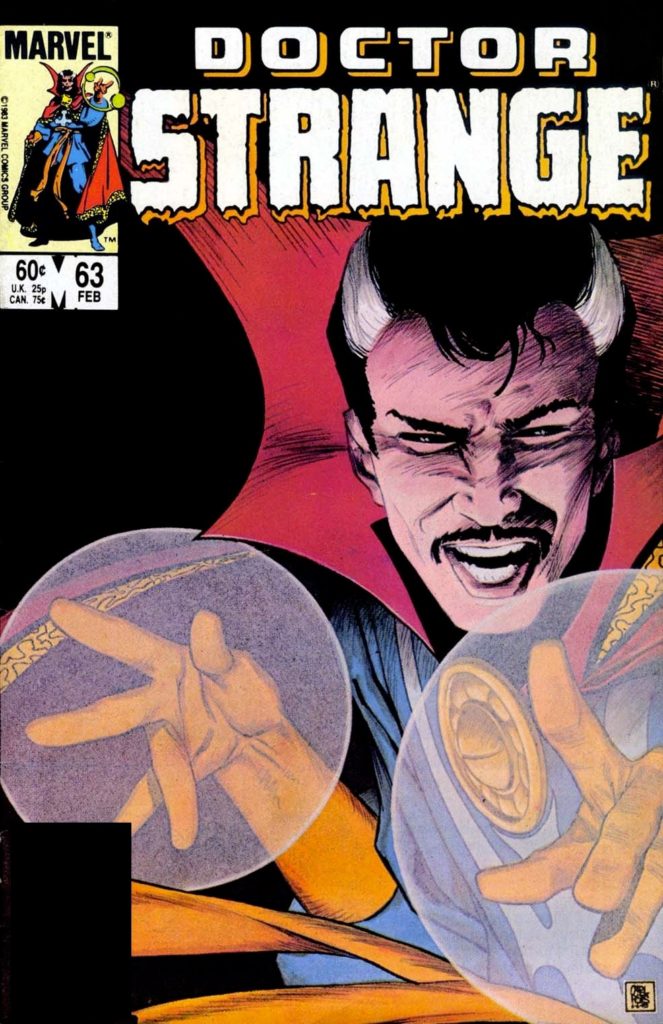 Last Year’s Rank: Unranked (#19 in 2014)
Last Year’s Rank: Unranked (#19 in 2014)
Probable Contents: Doctor Strange (1974) #27-37 & #47-75, Chamber of Chills (1972) #3-4.
Possible Contents: Including the run-up story from #23-26 would be beneficial. Issues #38-46 & 63-64 were not written by Stern; Man-Thing Vol. 2 #4 crosses over to #41. Also, a Stern-themed volume might add his decade-later classic Dr. Strange & Dr. Doom: Triumph & Torment (1989) as well as an inventory story in Dr. Strange: From The Marvel Vault.
What is it? Doctor Strange perfected, complete with epic stories and big action beats.
The Details:
Doctor Strange has always been about more than casting spells and Roger Stern’s run places that on fine display.
While this isn’t vastly different than the Strange who came before, the good doctor’s adventures here are more action-oriented than in the past and Clea takes up a more significant and active role. He puts Strange through his paces battling over the Wheel of Time, fending off a foe with Namor, being sucked into Nightmare’s realm, and battling his classic arch-nemesis Baron Mordo.
All of these stories are told in multiple parts, with the end of each bleeding into the beginning of the next, which makes Stern’s run feel like one massive epic. By many fan accounts, has an intangible quality of rightness to it – that this is the right feel for Doctor Strange.
Chances we see this in 2017? ![]() If this volume was going to happen the timing would likely be coordinated with the Doctor Strange movie out this fall. Instead, we’re getting an omnibus of the initial Ditko run and the first portion of Stern’s run in Marvel Masterworks format. It would take more than a pair more of Masterworks volumes to reach the end of Stern’s run even with the recent trend towards heftier volumes. That likely puts this omnibus out of reach until 2019 or later.
If this volume was going to happen the timing would likely be coordinated with the Doctor Strange movie out this fall. Instead, we’re getting an omnibus of the initial Ditko run and the first portion of Stern’s run in Marvel Masterworks format. It would take more than a pair more of Masterworks volumes to reach the end of Stern’s run even with the recent trend towards heftier volumes. That likely puts this omnibus out of reach until 2019 or later.
Want to read it right now? You can hang until until November to get started with Marvel Masterworks Volume 7, and the black-and-white Essential Strange Doctor Strange Volume 3 and Volume 4 only stretch through issue #56. A pair of TPBs – Triumph and Torment and Versus Dracula will get you through #62, and then (as pointed out by commenter Glenn!) Into The Dark Dimension covers #68-74. Visit the Doctor Strange Guide for more information.
![]()
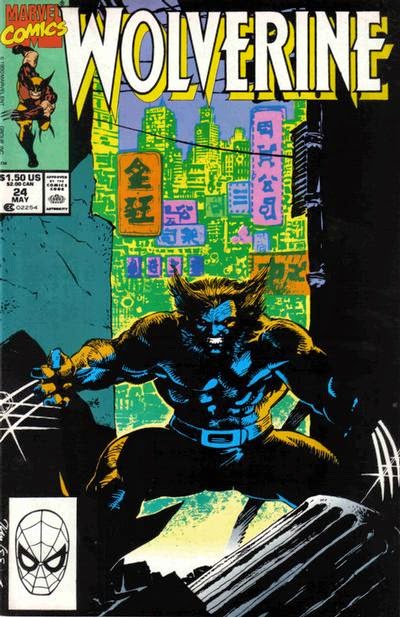 #27. Wolverine, Vol. 2
#27. Wolverine, Vol. 2
Last Year’s Rank: Unranked (#22 in 2013)
Probable Contents: Wolverine (1988) #11-30
Possible Contents: Some or all of Marvel Comics Presents #29-31, 38-47, 51-53, Wolverine/Havok: Meltdown #1-4, Wolverine/Punisher #1-3, Uncanny X-Men #268, Wolverine: Jungle Adventure OGN, and Wolverine/Nick Fury: The Scorpio Connection OGN.
What is it? Skippable middle-of-the-road Wolverine with some interesting spinoffs.
The Details:
This run represents a transitional period for Wolverine, both in front of and behind the scenes. In continuity, this was part of the period where the X-Men were dissolved, which meant Wolverine was adrift in a way he hadn’t been in 15 years of publishing. Behind the scenes, Chris Claremont had just departed the title after having been Wolverine’s sole author for almost as long.
This omnibus is actually a second Peter David entry in this installment, as he took over on Wolverine from Claremont with issue #11. David’s story, “The Gehenna Stone Affair,” is an Indiana Jones style of caper that may be the first time Wolverine starred in a solo story that wasn’t so specifically tailored to him (though it did fit well with the Madripoor theme/locale of the series). That made it more fun than your typical Wolverine yarn, even if it disqualifies it from being essential. From there, Archie Goodwin turns in a forgettable run fighting Tigershark before David returns for an issue and then Jo Duffy writes the remainder.
Altogether, it’s a somewhat-lumpy filler until Larry Hama arrives on issue #31 (along with Marc Silvestri) to make things fascinating – but that’s all tucked away in Volume 3, featured earlier in the secret ballot results at #47.
It’s the material from outside Wolverine’s title in this period that’s more interesting. Wolverine: Jungle Adventure pits him against Apocalypse in one of the villain’s few appearances outside X-Factor, and both Wolverine/Havok Meltdown and Wolverine/Nick Fury: The Scorpio are classics of the period that have withstood the test of time.
Chances we see this in 2017? ![]() A final Hugh Jackman Wolverine film based on material that’s already been oversized (Old Man Logan) means we have a chance to get another Wolverine book into Omnibus format – and there aren’t too many contenders. However, given that this volume is on the dull side, perhaps they really would leap directly to the Hama/Silvestri run?
A final Hugh Jackman Wolverine film based on material that’s already been oversized (Old Man Logan) means we have a chance to get another Wolverine book into Omnibus format – and there aren’t too many contenders. However, given that this volume is on the dull side, perhaps they really would leap directly to the Hama/Silvestri run?
Want to read it right now? Visit the Wolverine guide to see how this is collected as of today.
![]()
#26. Generation X, Vol. 1 AKA by Lobdell, Bachalo, & Grummett
Last Year’s Rank: Unranked (#45 in 2014)
Probable contents: Generation X #1-25 & Annual 1995, 1996, 1997 + Generation X Ashcan Edition, San Diego Preview, and material from Generation X Collector’s Preview.
Possible contents: Daydreamers #1-3 continues from Generation X #25 and has never been collected. The Generation X Classic TPB includes Uncanny X-Men #316-318 and X-Men #36-37 as a prequel. Despite that already being collected in Phalanx Covenant, since it’s only four issues I wouldn’t be shocked to see it here.)
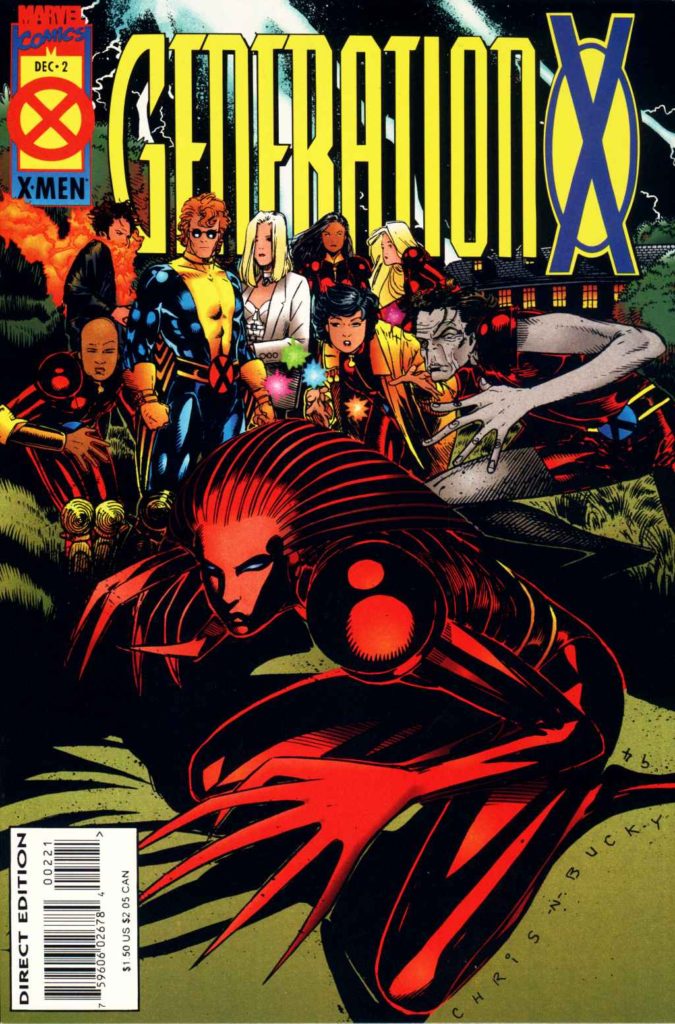 What is it? A fourth generation of weirder-than-ever mutant students are the only ones who survived assimilation by The Phalanx, and their headmaster is the White Queen!
What is it? A fourth generation of weirder-than-ever mutant students are the only ones who survived assimilation by The Phalanx, and their headmaster is the White Queen!
The Details:
I can’t adequately describe how truly weird Generation X was to read when it debuted in 1994.
All of the X-Men books had their own tones, and for years Excalibur had been the kooky one. However, that was all puns and British humor. This was something very different and more transgressive.
One main character’s power is to rip off her own skin, another has way too much of it, and a third has a hole filled with psychic fire where his face ought to be. Jubilee was the one totally “normal” student on a team that almost felt like X-Men with a body horror twist, which says nothing for their signature villain: a creepy-looking elephant man out of phase with reality named Emplate who devours… something… from other mutants to sate his thirst and is connected to one of the students.
Oh, and their headmasters are Banshee and the White Queen, a longtime villain whose last student body was slaughtered wholesale by sentinels.
And that’s just the first issue!
Scott Lobdell takes some flack in hindsight for occasional wheel-spinning during his tenure over multiple X-Men books, but this one was a strangle little gem. That’s in large part due to stunning artwork from co-creator Chris Bachalo, who does a bare majority of these issues. Bachalo was straight off of a run on Shade: The Changing Man for Vertigo with Peter Milligan and before that the legendary Death: The High Cost of Living with Neil Gaiman. He was a rare mid-90s Marvel artist with a very serious critical pedigree at a point in time when the biggest artists were largely defecting to other publishers. Bachalo’s characters all seem three dimensionally round, like we might be able to see around the strangely perfect, Weeble-like curvature of their hair as they pop off of the page.
This was the first time an indie comics aesthetic had been brought to bear on an X-Men title, and while Generation X was no Vertigo book, it certainly wasn’t an X-Men book either. Early issues had that feeling of stuff that simply happened to people. Not Claremontian soap opera stuff, but random events and coincidences that make up life. The book was lackadaisical even while being overtaken by events like The Age of Apocalypse (where Bachalo turns in a quartet of stunner issues – they’re so good it’s almost worth collecting them here despite their lack of relevance) .
Without Bachalo, the book drifts; an overly-long Omega Red encounter feels like standard-issue X_men before we get back to more weirdness with Emplate. Yet, Generation X never becomes a run-of-the-mill X-Men book of mutants dealing with some variable in the outside world. There’s a reason it’s still so cherished by fans who stuck with Marvel through the latter half of the 90s. They have enemies, but they mostly have each other.
Chances we see this in 2017? ![]() Generation X has no brand resonance in the current world of X-Men and all of these characters are presently dead or shelved with the exception of Monet. Yet, X-fans are a rabid bunch, and this volume includes issues never previously collected and would entirely plug an oversized gap between the existing oversized tomes X-Men: Phalanx Covenant and X-Men: Zero Tolerance. It’s unlikely, but not completely out of the question.
Generation X has no brand resonance in the current world of X-Men and all of these characters are presently dead or shelved with the exception of Monet. Yet, X-fans are a rabid bunch, and this volume includes issues never previously collected and would entirely plug an oversized gap between the existing oversized tomes X-Men: Phalanx Covenant and X-Men: Zero Tolerance. It’s unlikely, but not completely out of the question.
Want to read it right now? Generation X is included in my comprehensive Young X-Men guide, but you’ll only get halfway through this run in existing collected editions.
![]()
Hello,
Doctor Strange also has: Doctor Strange: Into the Dark Dimension
https://www.amazon.com/Doctor-Strange-Into-Dark-Dimension/dp/0785155058?ie=UTF8&*Version*=1&*entries*=0
I agree I would love to see a Stern/Strange omnibus
Thanks, Glenn! For some reason I had it in my head that was the collection that started at #75 (which is Ferryman). All the more reason to finish work on my Doctor Strange guide!